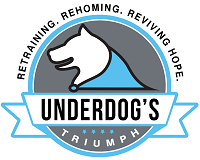Training. Most people think of training as that boring thing you have to do to drill you dog into becoming a proper canine member of society. Each day you practice the same thing, over and over until one day, maybe, your dog will understand. Or worse yet, you dislike the idea of drilling something over and over so much, that a small fixable problem turns into what seems like a insurmountable one. What a lot of people don’t realize is that your dog picks up on your “bored” or “disinterested” approach to training and it effects their learning too.
To get good results, we need to teach positively, and be upbeat and quick pace for our dogs to remain interested and engaged in what they’re learning. The same environment applies to humans too. Think back to your own favorite professor or teacher growing up. Did that person stand at the front of the classroom, and read from the slides or make you do drills for hours on end? No. Dogs enjoy the same types of learning environments we do.
This spring I enrolled in the “Spring into Transformation” course taught online by Absolute Dogs. Their whole training model focuses around making training enjoyable for both canine and human. And most importantly have fun while learning useful skills to build confidence and promote optimism. Thus far it’s been an interesting take on dog training for me. So often in training everyone is working towards a final finish line: like a sit or a down. We try to micromanage everything instead of teaching the dogs skills they need to apply to general situations.
This, I feel, is a major flaw in most training classes. You teach everything in one location. Dogs are terrible at generalizing behaviors to different situations. Human however excel at this. If I teach you how to read in the living room and then hand you a book in the kitchen. Odds are you’ll still know how to read. Dog’s minds don’t work like this. If you only teach dogs how to sit in the living room, they will ONLY know how to sit in the living room, ask them to do so in the kitchen and it will take a while before they realize you’re asking for the same behavior. This learning difference can make dog training hard because we can’t possible train in every single situation we might encounter in real life.
Spring into Transformation turns this on its head. Instead of teaching your dog to say wear a muzzle, you teach them the general behavior of getting rewarded for sticking their face into things. Even more basic things like getting your dog to walk across uneven surfaces or unfamiliar surfaces like marble, gravel or wood chips is transformed into a game that’s fun and enjoyable for you both.
To illustrate this we have our TLC alumni super star Esther. She’ll be demonstrating a new game called “feet on” which is designed to get dogs used to walking on different textures and to get comfortable with unsteady surfaces. All in all it builds both confidence that the new sensation won’t hurt them, and optimism in that novelty brings about good things! For the video below, we’re just using Esther’s dinner as her rewards, so instead of just getting an entire “free” bowl of kibble, she works for it (and you’ll see how much she hates that haha!).
For now, don’t worry about the techniques, we’ll chat more about all the components later, but here’s some basic lingo to get you started. I’m using “yes” as a clicker as I didn’t have my actual clicker handy and Esther has been taught both clicker or “yes” mean it marks “that” was the behavior I was looking for. I use a combination of “luring” to pull her onto the pillow the first few times, then I’ll fade that away and see if she offers the behavior herself without any guidance. Esther is very good at these “guess what crazy thing mom wants you to do” games and as you’ll see below how quickly she picks up the “game”. The other thing you’ll note, is I don’t use any verbal words for what I want her do to – something a lot of folks forget. Since she doesn’t know the behavior yet… how can it have a name? We’ll add the name in later, after she already knows it. Watch below as Esther attempts her first “feet on” on a very easy object – a pillow. Enjoy!
